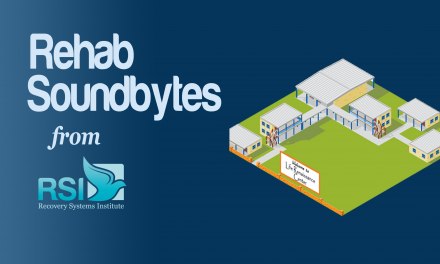A few years back I worked with a residential program that functioned as a court of last resort for folks for whom the other programs didn’t work. People could stay a month or twelve. All had co-occurring disorders, including trauma-related, the program’s special interest.
After about six months I finally got time to do something I normally do in the first thirty days: Take a close look at exactly who we were treating. We pulled a random 24% of charts of patients discharged in the most recent two quarters. Then I sat down to review the psychiatric evaluation, the History & Physical, and the psychosocial assessment. Here’s what I found, using DSM terminology:
- 64% met criteria for PTSD (not surprising given our stated mission)
- 55% were polysubstance dependent, and 36% alcohol dependent
- 65% met criteria for a depressive disorder and 25% for a bipolar disorder
- 40% qualified for generalized anxiety disorder, 36% for panic disorder
- 20% had a sexual disorder (various types), same for eating disorders (about equally divided between anorexia and bulimia)
- 20% met criteria for a dissociative disorder
- 72% qualified for an Axis II personality disorder
In fact, a typical patient met criteria for up to six Axis I disorders. That doesn’t mean they actually suffered from six different illnesses. It does suggest that even after considerable reflection, we weren’t quite sure what was wrong with them. This was really the crux of the problem.
Though many had trauma histories, and/or addiction histories, and/or mood or anxiety disorders or both, and/or eating or sexual or behavioral disorders, in the final analysis, they didn’t actually fit any of those categories very well. Or perhaps they fit way too many categories for comfort.
The DSM (Diagnostic and Statistical Manual–the basis for much of behavioral health diagnosis and treatment) is a symptom-based classification system. I visualize that wall of PO boxes at the local post office. First the mail clerk tries to fit your package in regular-size box. If it’s too big, you get a notice to come back and pick it up when the post office is open again. The DSM is like that. It works just fine as long as your patient fits in one of those boxes. Or maybe two of similar size. Where they don’t however — you have a problem.
Know that old saw about how if it looks like a duck and quacks like a duck, it must be a duck? Not here. It could be a pigeon. Or a woodpecker. Or a swan.
Same with stages of change. There’s this big group we lump under the heading ‘precontemplation’. But in practice, there are precontemplators, and pre-pre-contemplators, and pre-pre-pre-pre-pre-contemplators. Do you treat them the same way? Good luck if you do.
Anyway, when I use the term ‘complex case’, it means something fairly specific:
- Multiple Axis I disorders; plus
- Either an Axis II personality disorder or a significant other complication in the area of medical, social, or family problems; and
- An established history of poor treatment response.
Personally, I think this is a very real population in treatment today, and one that represents a meaningful chunk of so-called ‘treatment failures’, which says as much about us as it does about them.
I plan to spend some time here exploring better ways to treat these folks, because it’s by our work with the most challenging that ultimately we will be judged.
I welcome suggestions. After all, I’m not entirely sure what’s going on, either.













